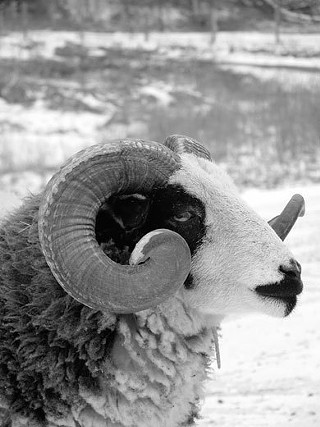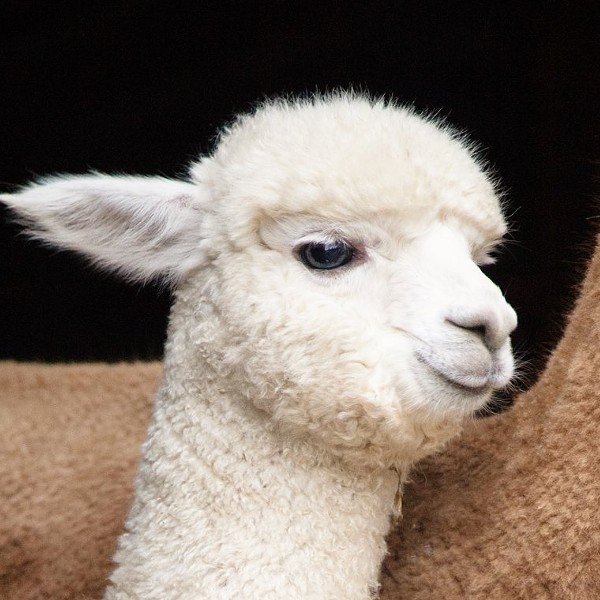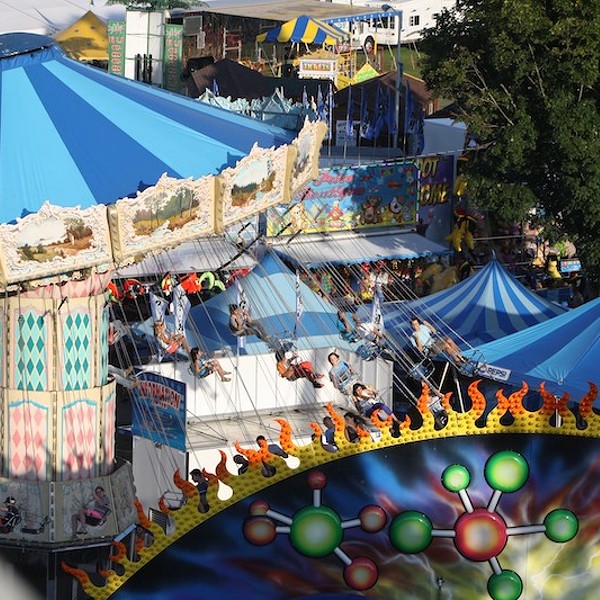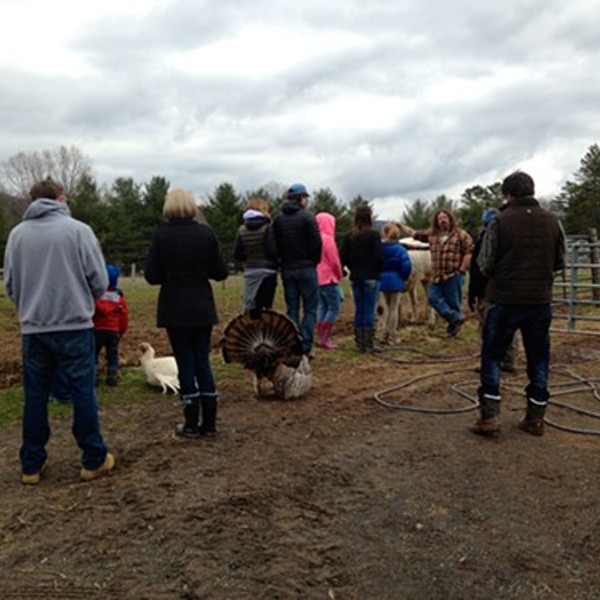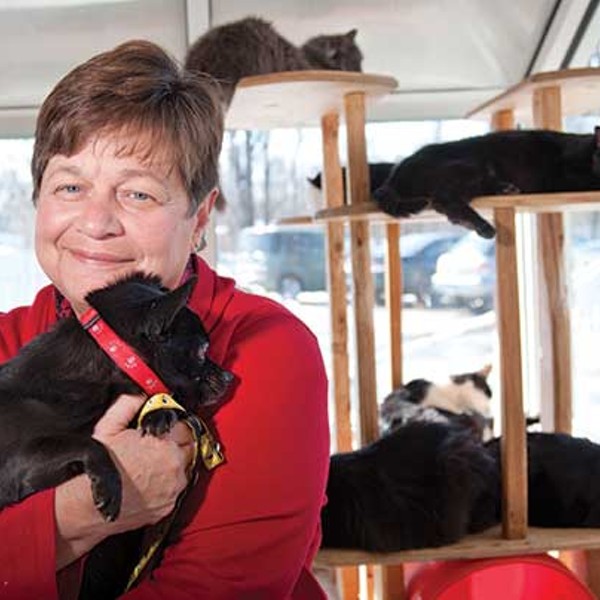Fifty miles northwest of Albany, Julia Bennett-Blue called her Gloversville home Blue Haven Farm. But the scene discovered by authorities responding to a report of dogs’ devouring a live llama on January 11 would hardly qualify as a haven of any hue. Over 100 animals have since been removed from the property; according to the Gloversville Leader-Herald, some 30 cats and a dog named Fred remain.
Charges of animal cruelty are being pressed against Bennett-Blue, as local authorities from police agencies, the Society for the Prevention of Cruelty to Animals, and the health and building departments seek to sort out the issues involved. But to Kathy Stevens, director of the Catskill Animal Sanctuary, it’s a sadly familiar story. “This woman has been arrested seven times in Fulton County alone,” says Stevens. “Before that, in the 1970s, she was on the cover of Newsday when they raided her New York apartment…. There should be some way to treat animal hoarding and prevent re-accumulation—but hoarding is an addiction. These are people who say they love animals, but when you look at the misery they foster, you have to wonder about their understanding of love.”
Animal hoarding as a distinct phenomenon has been recognized by professionals for some time, but is just beginning to be understood. According to experts at the Hoarding of Animals Research Consortium of Tufts University’s veterinary school, it used to be called “collecting”, but that term was dropped because too often it has positive connotations. There’s nothing positive about hoarding, defined by the harc as a case in which someone accumulates a large number of animals, fails to provide minimal standards of nutrition, sanitation, and veterinary care, fails to act on the deteriorating condition of the animals (including disease, starvation, and even death) or the environment (severely overcrowded and unsanitary conditions), and fails to act on or recognize the negative impact of the collection on their own health and well-being.
Harc studies indicate that hoarders are often older women, fearful of much contact with humans and perhaps experiencing the early stages of dementia or a form of obsessive-compulsive disorder. But Pat Volusik of the New York State Humane Association says that not all cases she’s seen fit the stereotype. “It’s different varieties of people, not just little old ladies,” she says. “The common thread is that they just have no conception of the condition of the animals. They don’t see the pain and suffering.”
Volusik points to the case of Justin McCarthy, an Ellenville-area man prosecuted for animal cruelty in the 1990s. “McCarthyhad money, he got lots of donations, he got lots of good publicity—he was tagged as ‘St. Francis of the Catskills’ by national media,” she says. “He had friends in high places. When the rescuers went in, they found animals cannibalizing each other.”
Volusik sees a correlation between increased instances of hoarding—of which about 2,000 are uncovered nationally each year—and the overcrowding of legitimate animal shelters; when there’s no room at the inn, she says, folks looking to get rid of livestock can close their eyes to shady circumstances. “Desperate people do desperate things,” she says. “It’s a throwaway society, and when pets get in the way and they’re past the cute and cuddly stage…. Rescuers sometimes find animal carriers unopened at hoarding places, with the note still on them, ‘Please take care of Fifi,’ and all that’s inside is a corpse.”
Fortunately for the 40 llamas, horses, miniature horses, and donkeys recovered from Blue Haven Farm, the Catskill Animal Sanctuary was ready and willing to take them in. Snuggled into a glen off Old Stage Road on the Saugerties/Ulster line, the Sanctuary is a bustling, friendly place on a Saturday afternoon, as volunteers go about the thousand tasks of tending their charges. Volunteer Karen Lockrow is helping staffer Lorraine Roscino convince a goose to swallow a pill. Her injured wing is healing nicely. “She arrived with a horse, five other geese, and some chickens,” says Lockrow.
Lockrow, a commercial insurance agent, used to raise, train, and show horses. “I never thought I’d be coming here, holding ducks and playing with pigs,” she says. “But this place is the greatest. Animals are the most forgiving creatures on the planet—some of these have been through hell and back ten times, and they bounce back, give their hearts again…. Even the ones that seem aggressive, it’s not meanness, it’s fear.”
I am introduced to a sampling of large, friendly critters; some of the Blue Haven refugees are up the hill in quieter pastures, but I meet mini-horses and donkeys, llamas, and a variety of full-sized horses. Only days away from their purgatory, they’re nonetheless responsive and friendly, offering velvet noses and liquid eyes, warm breath in the chill, fragrant air of the clean barn.
The barn aisle is dominated by a massive sheep, sprawled at his ease. Signs everywhere warn visitors not to give the animals treats, on pain of being fed to Petunia the pig—but Rambo, as the ram is known, looks like he’s snagged a few somewhere along the line. Lying down, he resembles a round sheepskin-covered hassock with elegant, curvaceous horns. I stop to run my fingers through his wool. He practically purrs at me.
“Rambo and seventeen others were our first major cruelty case,” recalls Kathy Stevens in a phone interview. “They’d all been living in one stall, and one of them was a 2,500 pound steer. They all got adopted except for Rambo. He was so angry, very violent. He used to throw us across the stall with his horns. But gradually he softened and became who he was meant to be. He greets every new animal, sleeps outside their stall the first night.”
As a haven for large domestic animals, the Catskill Animal Sanctuary is a rare phenomenon. Volusik says the nearest one of any size is in Ithaca. The work involved is enormous, of course, and though publicity surrounding the recently rescued livestock—which nearly doubled the head count—has brought in some fresh volunteer energy, more is always needed, especially during the week. Money, too, is perpetually in short supply—the veterinary expenses for the goose with the injured wing alone are $1,300—as is land. The sanctuary currently occupies 70 acres; 30 acres adjacent are for sale.
Extra land would be helpful, but not before more immediate needs, like a decent four-wheel-drive tractor, are satisfied.
“I never want to get bigger than 100 animals, because I want us to always know them individually—their names, their medical needs, their quirks,” says Stevens. “So we heal them and place them in good homes. We’re very picky…. Our mission is twofold: to save as many truly needy animals as we can, and to promote compassionate living overall, educating people about how institutionalized cruelty impacts everything—animals, humans, the entire planet.”
Animal hoarding is one of those problems that the system doesn’t seem too well equipped to handle, says Volusik. “There are laws, but they’re not in the penal code—they’re in the Agriculture and Markets code; most police don’t even know where to look. Often these people get a lot of public sympathy. They always have a story—‘It wasn’t this bad, it was fine, and then I got sick,’ or whatever. Judges slap them on the wrist. And in many, many cases they’re repeat offenders. It would be nice if the law were enhanced, so that at some point people with this disorder were no longer permitted to own more animals.”
For more information on the Catskill Animal Sanctuary, visit www.casanctuary.org, or call (845) 336-8447. The Sanctuary is open to the public on Saturdays from 10am to 3pm.







